#12 archetypes carl jung
Explore tagged Tumblr posts
Text
Know About Your Archetypes
Recurring patterns or universal symbols known as archetypes are present in the human collective unconscious. They stand for universally understood, historically pervasive human experiences, feelings, and actions. These archetypes provide a framework for mythology, narrative, and the human mind.

The Hero is an important archetype. The journey of a protagonist who embarks on a transforming mission and encounters difficulties is represented by the Hero archetype. This archetype stands for the capacity for progress, bravery, and resistance to adversity in people. The Hero's journey frequently includes a summons to action, a mentor figure, a pivotal conflict, and a return with fresh insight or a priceless gift. The Trickster is another well-known archetype. The figure who disturbs the status quo and defies authority is the Trickster archetype, who is crafty and mischievous. This archetype personifies the disorganized and erratic elements of human nature. The Trickster frequently acts as a catalyst for change and transformation, dismantling established laws and customs to introduce fresh viewpoints and opportunities.
The Wise Old Man/Woman archetype, last but not least, stands for knowledge, wisdom, and direction. Typically, an older, wiser person who possesses profound insight and understanding is shown as this archetype. The protagonist receives guidance and advice from the Wise Old Man/Woman, who also acts as a mentor or counselor. This archetype stands for the value of learning from the past, the pursuit of knowledge, and self-discovery.
Because they appeal to common human emotions and experiences, archetypes are potent storytelling devices that captivate audiences. They offer a conceptual framework for comprehending the complexity of both human nature and the environment. Storytellers and individuals can draw on the rich reservoir of universal understanding and produce narratives that connect with audiences by knowing and utilizing archetypes.
If you want to know more, You can type your queries:-
10 Benefits that you should know about:-
1. Universality: Archetypes are universal symbols and patterns that resonate with people across cultures and periods. They tap into deep, shared human experiences, making them relatable and accessible to a wide range of audiences.
2. Emotional resonance: Archetypes evoke strong emotions and connect with our subconscious. They can trigger deep-seated feelings, desires, and fears, allowing us to engage with stories or concepts profoundly.
3. Psychological insight: Archetypes provide valuable insights into the human psyche. By exploring archetypal patterns, we can better understand ourselves, our motivations, and the behaviors and motivations of others.
4. Narrative structure: Archetypes serve as a blueprint for storytelling. They offer a framework for constructing compelling narratives, creating dynamic characters, and developing coherent plotlines that captivate audiences.
5. Symbolic language: Archetypes operate through symbolism, allowing complex ideas and themes to be conveyed in a concise and impactful manner. They provide a shared symbolic language that transcends linguistic and cultural barriers.
6. Personal growth: Engaging with archetypes can lead to personal growth and self-discovery. By recognizing archetypal patterns within ourselves, we can gain insight into our strengths, weaknesses, and potential for transformation.
7. Collective identity: Archetypes contribute to the formation of collective identity and cultural cohesion. They are embedded in myths, legends, and cultural narratives, shaping our understanding of ourselves and our place in the world.
8. Creative inspiration: Archetypes inspire creativity by offering a rich source of ideas and themes. They can be used as a starting point for generating new stories, characters, and concepts, sparking the imagination and opening up new creative possibilities.
9. Psychological healing: Archetypes have therapeutic value and can be used in various forms of psychotherapy. They provide a framework for exploring and resolving psychological conflicts, facilitating healing and personal growth.
10. Transcending boundaries: Archetypes have the power to transcend boundaries of time, culture, and individual differences. They create a sense of interconnectedness and shared humanity, fostering empathy, understanding, and a sense of belonging.

If you want to know more, You can type your queries:-
#greek mythology#norse mythology#mythology and folklore#egyptian mythology#humanity#universal#symbols#archetypes#jungian archetypes#fantasy archetypes#archetypes of the collective unconscious#archetypes jung#carl jung archetypes#12 archetypes#archetype#brand archetypes#what are archetypes#feminine archetypes#archetypes explained#12 archetypes carl jung#lover archetype#brand archetype framework#how to use archetypes#embody archetypes#archetypes 101#carl jung four archetypes#face archetypes#jung archetypes#deck archetypes#the outlaw archetype
5 notes
·
View notes
Text
❝ The introverted intuitive has, in a way, a very difficult life, although one of the most interesting lives. ❞
— Carl Jung
#carl jung#model of psyche#12 archetypes#albert camus#fyodor dostoevsky#psychology#poems and quotes#spilled thoughts#spilled words#spilled ink#spilled poetry#spilled writing#gaslight gatekeep girlblog#girl blogger#just girly things#im just a girl#cinnamon girl#girl interrupted#girlblogger#girlblog#girlblogging#hell is a teenage girl#mean girls#gossip girl#alt girl#gaslight gatekeep girlboss#girl blog#girl interrupted syndrome#girl problems#girl rotting
16 notes
·
View notes
Text

It's just that. You drop into an archetypal realm where you are at war against your addiction. Mystery becomes real. Healing and transformation become possible.
#carl jung#jungian psychology#jungian archetypes#recovery#addiction#queer#alcoholism#12 steps#alcoholics anonymous#alcoholic#alanon#alchemy#transformation#sober#soberlife#soberliving#sobriety
0 notes
Text
Writing Notes: Archetypes

A quick rundown of the 12 archetypes that we often encounter in literature:
Caregiver - sacrifices themselves for the needs and wants of others
Creator - creates or envisions
Hero - will save the day with confidence, talent, strength, or skill
Innocent - pure in their motivations; often naive and inexperienced
Joker - adds humor to the story
Lover - driven by passion, love, or devotion
Orphan - may feel out of place; has a deep desire to be understood/accepted
Outlaw - a rebel who breaks social convention
Magician - understands the way the world works & uses it to their advantage
Ruler - has control and/or wants to be in control
Sage - has acquired wisdom and may act as a mentor
Seducer - irresistible and uses their charm to get what they want
Every character has a purpose. While the character may be the protagonist of their own lives, they won't necessarily be the protagonist in the story that you're telling.
Perhaps they're the antagonist. Or a mentor. Or both.
Understanding the character's identity in your story will help you create a complete arc that resonates with your reader.
Fortunately, there's a time-tested way to easily identify the roles your characters will play in your story.
It relies on psychologist Carl Jung's theory of archetypes.
Jung believed there were 12 patterns, or archetypes, that exist in our collective unconscious — the part of the mind that is common to all humans.
These 12 archetypes represent basic human motivations.
And we experience all of them.
However, we each tend to be dominated by only one of these archetypes. And that's the basis of our personality.
Archetype vs. Stereotype
An archetype is used to define the role that a character plays in a novel. They can be a hero, an orphan, and/or an innocent.
By contrast, a stereotype is an oversimplified set of characteristics we assign a person based on preconceived beliefs about the group that the person belongs to, whether we’re doing so by race, gender, age, religion, etc.
While an archetype can be used as the starting point for defining a complex character, a stereotype is quite the opposite.
Stereotypes are reductive and narrow characters into caricatures.
An archetype is a template.
A stereotype is a formulaic conclusion.
Source ⚜ Writing Notes & References Character Archetypes ⚜ Goals ⚜ Stereotypical Characters
#archetypes#writing notes#character development#writeblr#dark academia#spilled ink#character building#literature#writers on tumblr#writing reference#writing prompt#psychology#writing ideas#writing inspiration#creative writing#edward robert hughes#writing resources
168 notes
·
View notes
Text
I HAVE BEEN WAITING WEEKS TO POST THIS

But punko made us promise not to spoil, so I didn't
I present to you...the keys family portrait!!! More content under the cut <3

I know ex libris wouldn't have anything like this but it's kind of fun to imagine if they did. Like look at them

They're sitting on bookmarks

Back: Ambrose, Bronze, Cerulean, Goldie, Nox, Garnet, Sparaxis
Front: Platinum, Ivy, Silver, Violet, Greywen
(from left to right btw)
My story roles are roughly based on Carl Jung's theory of the 12 story archetypes. I know I'm going to have to redraw this at some point when we meet the rest of the keys bc Punko will do it differently but that's a later me problem

Of course we have our faves, Goldie, Bronze and Silver. Who are the Hero, helper and heroine respectively
In the archetypes, Hero is self explanatory, but Helper is equivalent to the 'caregiver' role, and the 'Heroine' is just an aspect of the hero. But I think the 'Heroine' role could replace the 'everyman' role. So there's that.

NOX AND VIOLET EVERYBODY!!!!!
I actually think Nox suits him so well, although I still think of him as Buddy most of the time
The 'villain' and 'villainess' don't really exist in the archetypes, although there is a role called the 'outlaw', which I expect would kind of be an antagonist. But because of what we know of them so far, Nox (Buddy) replaces the 'explorer'. Not that this is very important

Sorry the picture turned out so big!!! This is Cerulean. I invented him for my fic Darcy Forenski and the Summer She Was a Wizard and he's the mentor key, which is the 'sage' role. They're the same thing. It's why he has a beard :D

This is Garnet, the ruler key. We've seen an arm of a red key in the episode 'dreams by day', so I just drew the rest of him lol

This is Sparaxis, the trickster key. In Cinderella boy, there's a 'thief' key that's mentioned, and in the 12 story roles there's a 'jester' key. Because Buddy (Nox) was the black colour I kind of ran out of ideas to make them look more like a thief, so I just made them a trickster with a jester hat.
Also the name sparaxis comes from an orange-coloured flower

This is Greywen, the creator/inventor key. What role does this allow you to access? Mad scientist. Artists. People that set the plot in motion. (she kind of ended up looking a little bit like prunella. Oops)

This is Ivy, the magician key. I did not draw her very well. But we also saw her in 'Dreams by day' in Silver's dream, and I thought the wings fit well with the magic idea.

This is Ambrose, the lover key. I know, I know! Its been said that there is no 'love interest' key, but that doesn't mean there can't be a 'lover' key. I mean, I guess he could be the thief key but that would just make him Hermes
Like, the literal greek god
anyway

Last, but certainly not least, we have Platinum. The innocent/the shadow.
This role is kind of hard to explain because in the 12 roles theory there's a role called the 'innocent', which is like the doomed innocent. The things that are good in the world. But there are a lot of roles that don't quite fit if you put all 12 keys in a story, and also because the keys are people I don't think she would be this perfect little girl all the time, even though she might look it. That's why I called her the shadow. I think this one is the least likely to be part of canon but it's what made the most sense to me

Anyway have some extra drawings of cerulean because he's my boy and I love him
#cinderella boy#cinderella boy finale#nox cinderella boy#fanart#the keys cinderella boy#silver cinderella boy#bronze cinderella boy#goldie cinderella boy#ex libris#webtoon#webtoon fanart#yes some of them are original characters okay#ssssshhhhhh#cinderella boy season 1#violet cinderella boy
64 notes
·
View notes
Text
youtube
A Derek Jarman film with music by Throbbing Gristle Derek Jarman used some of his 70s home movie footage to produce this wonderful piece of exploitational avantgarde cinema. Actually the original material has been slowed down to a speed of 3-6 frames, then Jarman added colour effects and the pulsating, menacing score by Industrial supergroup Throbbing Gristle The result is a piece of art not to dissimilar to Jarman’s painting work in using found footage as elements of memory and mind that resemble ideas reflected in the Cabala and in C.G. Jung`s writings about an archetypical past that is hidden in everyone of us. The first, In the Shadow of the Sun (1974-80), was originally put together by Jarman himself in 1974 from re-shot Super-8 material including footage from The Art of Mirrors and Journey to Avebury, amongst several others. The film was eventually blown-up to 35mm and premiered at the 1981 Berlin Film Festival. The focus on ritual, mysticism and obscure alchemical symbolism links it with the work of Anger. However, Jarman’s preference for the work of Carl Jung and the “white” magician John Dee, is quite distinct from Anger’s invocations of the “black” magician Alistair Crowley. – Jon Behrens
Extending the recent pagan theme, Ubuweb posts Derek Jarman’s determinedly occult and oneiric film, In the Shadow of the Sun (1980), notable for its soundtrack by Throbbing Gristle. This was the longest of Jarman’s films derived from Super-8 which he made throughout the 1970s between work as a production designer and his feature films. He never saw the low resolution, grain and scratches of Super-8 as a deficiency; on the contrary, for a painter it was a means to achieve with film stock some of the texture of painting. Michael O’Pray described the process and intent behind the film in Afterimage 12 (1985):
In 1973, Jarman shot the central sequences for his first lengthy film, and most ambitious to date, In the Shadow of the Sun, which in fact was not shown publicly until 1980, at the Berlin Film Festival. In the film he incorporated two early films, A Journey to Avebury a romantic landscape film, and The Magician (a.k.a. Tarot). The final sequences were shot on Fire Island in the following year. Fire Island survives as a separate film. In this period, Jarman had begun to express a mythology which he felt underpinned the film. He writes in Dancing Ledge of discovering “the key to the imagery that I had created quite unconsciously in the preceding months”, namely Jung’s Alchemical Studies and Seven Sermons to the Dead. He also states that these books “gave me the confidence to allow my dream-images to drift and collide at random”. The themes and ideas found in Jubilee, The Angelic Conversation, The Tempest and to some extent in Imagining October are powerfully distilled in In the Shadow of the Sun. Jarman’s obsession with the sun, fire and gold (which spilled over in the paintings he exhibited at the ICA in 1984) and an ancient mythology and poetics are compressed in In the Shadow of the Sun with its rich superimposition and painterly textures achieved through the degeneration “caused by the refilming of multiple images”. Jarman describes some of the ideas behind In the Shadow of the Sun:
“This is the way the Super-8s are structured from writing: the buried word-signs emphasize the fact that they convey a language. There is the image and the word, and the image of the word. The ‘poetry of fire’ relies on a treatment of word and object as equivalent: both are signs; both are luminous and opaque. The pleasure of Super-8 is the pleasure of seeing language put through the magic lantern.” Dancing Ledge p.129
John Coulthart
#Youtube#In the Shadow of the Sun (1981)#Derek Jarman#Throbbing Gristle#compilation#8mm short films#soundtrack#experimental#sound art#music#Super 8 films#film
35 notes
·
View notes
Note
hey your pinned says you're a maid archetype. I'm just curious of what that is/how you figure out that's your archetype? I know Carl Jung as archetype things but that doesn't seem to be the same thing, since some in the community have like other animals as their archetypes.
Hi!! tysm for asking! :3
"An archetrope [if you didnt know!] is an identity based on an archetype, trope or other role." Some archetypes ive seen have been an unreliable narrator, a cowboy, and a paladin (obviously not an exhaustive list). The identity of archetropy doesnt have anything to do with carl jungs archetypes though!! Ive actually never seen an animal archetype, that sounds super interesting id love to hear more about them!
"Having an archetrope has been compared to having an interpersonal role such as 'partner' or 'teacher'" (both quotes from otherkin wiki)
I have a post talking about my archetype experience here!
But in short (not really short mb); ever since i was around the age of 12 I always fantasied about becoming and training as a maid (/believed i was meant to). Seeing maids in media always felt like looking at a life i was meant to have, living in a big victorian-esque castle, training and fulfilling my duties as a maid.
When doing research on alterhumanity and all the different identities and labels underneath it, reading about archetropy clicked with my feelings and want of being a maid. Having an archetype/being an archetrope can influence how people feel, jobs they have as well as anything else in life just like any alterhuman identity.
For me personally I've always loved the idea of working in a very professional, 'fancy,' service job (like hotels, personal maids, etc) because it definitely fulfills all the feelings i have about being a maid archetype, unfortunately i dont think it would be fees-able to get for me which is why its only really a fantasy for me :P (i am enjoying my retail job though because its still providing a service for people and i try to be as professional as i can be)
I hope this helps answer your question, sorry if i rambled a bit; feel free to ask any more questions though if you have any!!
#bug barks#archetropy#maid archetrope#archetype#alterhumanity#alterhuman archetrope#alterhuman#otherkin
10 notes
·
View notes
Text
ATLA MILF Month will happen in March 2025! This month will celebrate all the ATLA-verse moms and older women who... well, you know!
Click here to submit prompts! Click here to check the event guidelines! Do you have any questions? Do you want to be a mod? Please send us an ask.
Thank you for participating. We hope you enjoy the event!
More about the archetypes under the cut!
Taken from "Writing 101: All the Different Types of Characters in Literature".
Characters in a work of fiction can usually be grouped into archetypes. These archetypes have been categorized by Swiss psychologist Carl Jung, the American literary theorist Joseph Campbell, and generations of authors, screenwriters, and storytellers. Here are the 12 commonly discussed character archetypes:
1. The Lover: the romantic lead who’s guided by the heart. Their strengths include humanism, passion, and conviction. Their weaknesses include naivete and irrationality. Some famous lovers are Romeo, Juliet, and Scarlett O’Hara.
2. The Hero: the protagonist who rises to meet a challenge and saves the day. Their strengths are courage, perseverance, and honor. Their weaknesses include overconfidence and hubris. Some famous heros are Achilles, Luke Skywalker, and Wonder Woman
3. The Magician: a powerful figure who has harnessed the ways of the universe to achieve their goals. Their strengths may include omniscience, omnipotence, and discipline, while their weaknesses center on corruptibility and arrogance. Prospero, Gandalf, Morpheus, and Dumbledore are famous magician characters.
4. The Outlaw: the rebel who won’t abide by society’s demands. The outlaw can be a bad guy, but not always. The outlaw’s strengths include independent thinking and skepticism. Their weaknesses may include self-involvement and criminality. Among the famous outlaws are Han Solo, Dean Moriarty, and Humbert Humbert.
5. The Explorer: a character naturally driven to push boundaries and find what’s next. Their strengths: They are curious, driven, and motivated by self-improvement. They are weak in that they are restless, unreliable, and never satisfied. Famous explorers include Odysseus, Sal Paradise, and Huckleberry Finn.
6. The Sage: a wise figure with knowledge for those who inquire. Strengths of the sage include wisdom, experience, and insight. In terms of weakness, the sage may be overly cautious and hesitant to actually join the action. A few famous sages: Athena, Obi-Wan Kenobi, and Hannibal Lecter (an evil sage).
7. The Innocent: a morally pure character, often a child, whose only intentions are good. Their strengths range from morality to kindness to sincerity. Their weaknesses start with being vulnerable, naive, and minimally skilled. Famous innocents are Tiny Tim, Lennie Small, Cio-Cio-San.
8. The Creator: a motivated visionary who creates art or structures during the narrative. Their strengths include creativity, willpower, and conviction. Their weaknesses include self-involvement, single-mindedness, and lack of practical skills. Famous creators include Zeus, Dr. Emmett Brown, and Dr. Moreau.
9. The Ruler: a character with legal or emotional power over others. The ruler’s strengths include omnipotence, status, and resources. Their weaknesses include aloofness, being disliked by others, and always seeming out of touch. Famous rulers include Creon, King Lear, and Huck Finn’s Aunt Sally.
10. The Caregiver: a character who continually supports others and makes sacrifices on their behalf. Among their strengths, caregivers are honorable, selfless, and loyal. Among their weaknesses, they lack personal ambition or leadership. Sometimes they even lack self worth. Famous caregivers include Dolly Oblonsky, Calpurnia, and Samwell Tarly.
11. The Everyman: a relatable character who feel recognizable from daily life. When it comes to strengths, they are grounded, salt-of-the-earth, and relatable. In terms of weaknesses, they typically lack special powers and are often unprepared for what’s to come. Famous everymen: Bilbo Baggins, Leopold Bloom, Leslie Knope.
12. The Jester: an intentionally funny character who provides comic relief but may also speak important truths. Strengths include the ability to be funny, disarming, and insightful. Weaknesses include the capacity to be obnoxious and superficial. Famous jesters range from Sir John Falstaff to King Lear’s Fool to George’s parents in Seinfeld.
#atlamilfs25#atla#tlok#atla event#tlok event#avatar#avatar the last airbender#avatar: the last airbender#the legend of korra#character archetypes#archetypes#atla fic#atla art#tlok fic#tlok art#lin beifong#suyin beifong#izumi#kya ii#kya#ursa#pema#buttercup raiko#senna#tagaka#hei ran#jesa#atuat#toph beifong#katara
11 notes
·
View notes
Text
From Stars to Self: Exploring Astrology and Enneagram Synergies
This is my first slightly longer post on astrology and the Enneagram, where I'll explore the connection between the two.
After many years of interest in astrology, I've also delved into personality type systems like MBTI and the Enneagram. It appears to me that they complement astrology well and that astrology, in return, can enhance them, adding nuance and depth.
The system I found most resonant with astrology is the Enneagram, and in this post, I'll briefly go over the connections between the two.

1. Visual Mapping of the Psyche
Both astrological charts and the Enneagram are visual systems based on circles.
Astrology uses two concentric circles, divided into 12 signs and 12 houses, which connect via the ascendant based on the birth time.
The Enneagram, conversely, deals with 9 personality types linked in a set sequence. Reading either a natal chart or the Enneagram wheel provides insights into an individual's characteristics, both positive and challenging, along with paths for transformation and growth.
Both systems focus on mapping the psyche, dealing with archetypes, symbols, and their interconnections.
Astrology explores planets, their meanings, and how they interact to form a unique personal diagram.
The Enneagram similarly maps personality types, showing paths of integration (growth) and disintegration, instead of planets.
Overlapping these two systems mentally can yield insightful, rewarding explorations.
This connection has been explored before, but not extensively. I believe there's still much to learn.
2. Temporal Dynamics: Past, Present, and Future
Both systems are inherently dynamic and temporal.
In astrology, natal charts outline an individual's potential, while transits and progressions suggest future developments or activate specific life themes. The 12 houses show where in life these themes might manifest, and the 12 signs describe the manner of manifestation, with planets indicating what.
The Enneagram, with its flow lines between types, charts personal evolution, offering pathways for the future. It provides nuanced profiling since no one is strictly one type. Each type can exist in advanced, average, or inferior states, moving between these or towards others through integration (growth) or disintegration (deterioration).
Together, these systems create a dynamic, three-dimensional image of a person evolving over time.
3. Historical Connection Between Astrology and the Enneagram
Astrology and the Enneagram have distinctly different histories. Astrology is ancient, evolving over millennia, and was once intertwined with astronomy until they diverged in the 17th century.
The Enneagram, however, is a more modern concept. While the symbol might predate the 20th century, its documented use in personality profiling began with George Gurdjieff, a Greek-Armenian philosopher and mystic, who brought it to Europe, focusing on process dynamics rather than fixed personality types. Later, Oscar Ichazo and particularly Claudio Naranjo adapted it for psychological profiling. (I might delve deeper into this history in another post.)
What's intriguing is that we can trace a historical connection between the Enneagram and astrology through Carl Jung. Jung believed archetypes are part of the collective unconscious, with astrology mirroring these archetypes, serving as a link to ancient mythologies.
First I'll explore the bridge between astrology and Jung, and after that, between Jung and the Enneagram.
Astrology and Jung
Jung posited that personality is shaped by archetypes from the collective unconscious. Each person possesses all archetypes, though some are active and others dormant. Archetypes activate at different life stages; the Hero archetype, for instance, often emerges during crises.
As we mature, we become more aware of our archetypes, integrating them in the process that Jung termed individuation. Some archetypes highlight brighter aspects (like The Wise Old Man), while others reveal darker sides (like The Shadow). Integrating both is key to self-mastery.
Jung saw astrology as a tool for mapping the psyche, aiding in the discovery and integration of archetypes. Each natal chart includes all planets and signs, which will all become active at various life stages, leading to self-knowledge, freedom, and fulfillment.
Jung and Enneagram
Having linked Jung with astrology, let's explore his connection to the Enneagram.
Claudio Naranjo, who shaped the modern Enneagram, studied at the C.G. Jung Institute in Zurich, absorbing Jungian ideas. He later combined Jungian psychology with the Enneagram, using Jungian terminology to explain Enneagram dynamics. (Naranjo was particularly interested in the concept of the shadow, relating it to the less evolved aspects of each Enneagram type.)
Many of the Jungian-Enneagram pairings are clear, like Hero (Jung) with Achiever (Enneagram Type 3), both focused on success and challenge, or Mother (Jung) with Helper (Type 2), both centered on nurturing, while some others might be less obvious.
The work on the less evolved self in the Enneagram parallels Jung's shadow work. Similarly, moving towards integration in the Enneagram reflects Jung's idea of transcending archetypes through understanding and integration, closing the circle between the Enneagram, Jung and astrology.
From stars to self, these two systems join forces, guiding us to uncover our authentic identities. In the coming posts I'll be exploring more on how astrology and the Enneagram enhance each other. Stay tuned :-��)
3 notes
·
View notes
Text
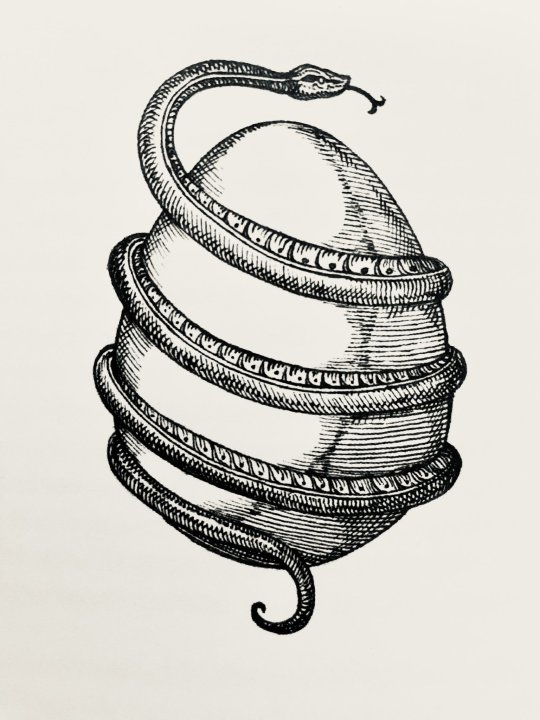


Happy Easter !
“In alchemy the egg stands for the chaos … Out of the egg … will rise the eagle or phoenix, the liberated soul, which is ultimately identical with the Anthropos who was imprisoned in the embrace of Physis.”. Carl Jung /CW 12, § 306
“The egg is a germ of life with a lofty symbolical significance. It is not just a cosmogonic symbol — it is also a “philosophical one”. As the former it is the Orphic Egg, the world’s beginning; as the latter, the philosophical egg of the medieval natural philosophers, the vessel from which, at the end of the opus alchymicum, the homunculus emerges… the spiritual, inner, and complete man.” Carl Jung Archetypes of the Collective Unconscious (Collected Works of Jung Vol 9)
"Ophis et ovum mundanum Tyriorum". (Snake and world egg of the inhabitants of Tyre) Jacob Bryant, "A new system, or, An analysis of ancient mythology." vol II plate IV
The Orphic Egg in the Ancient Greek Orphic tradition is the cosmic egg from which hatched the primordial hermaphroditic deity Phanes/Protogonus who in turn created the other gods. The egg is often depicted with the serpent-like creature, Ananke, wound about it.
Jacob Bryant (1715–1804) was an English scholar and mythographer, who has been described as "the outstanding figure among the mythagogues who flourished in the late eighteenth and early nineteenth centuries."
Art: The Orphic Egg by Jacob Bryant (1774)
13 notes
·
View notes
Text
Jungian Tarot: Exploring Symbols for Self-Discovery
I've dedicated a significant amount of time to studying tarot cards, not for divination, but rather for their ability to aid in my understanding and interpretation of symbolism—a significant aspect of Carl Jung's work.
Tarot cards, often associated with mysticism and fortune-telling, possess a deeper significance when viewed through the lens of Carl Jung's archetypal psychology. Beyond their traditional use, tarot cards serve as mirrors reflecting various facets of the human psyche. Each card embodies a distinct archetype, offering insight into different dimensions of our personality. By engaging with the imagery and symbolism of tarot, individuals can mentally tap into universal patterns and symbols residing within the collective unconscious, gaining deeper understanding of their own strengths, weaknesses, and motivations. The process of exploring tarot cards in conjunction with Jungian psychology facilitates a journey of self-discovery and personal growth, emphasizing introspection, reflection, and integration of the conscious and unconscious aspects of the psyche.
Here is an example of how we can connect the 12 Jungian Archetypes with the 22 Major Arcana Cards of Tarot:
The Innocent (The Fool, The World): The Fool represents new beginnings and innocence, similar to the archetype of The Innocent, embodying purity and a fresh start. The World symbolizes completion and fulfillment, reflecting the innocence that comes with achieving one's goals and reaching a state of wholeness.
The Everyman (The Hanged Man, The Moon): The Hanged Man symbolizes moments of pause and acceptance, much like the Everyman archetype's encounters with vulnerability and ambiguity. Meanwhile, The Moon symbolizes the subconscious and illusions, mirroring the inner exploration and emotional upheaval often encountered by individuals embodying the Everyman archetype.
The Hero (The Chariot, Strength, The Magician): The Chariot signifies victory and willpower, mirroring the courageous and determined nature of The Hero archetype. Strength represents inner strength and resilience, traits essential for The Hero's journey of overcoming obstacles. The Magician symbolizes mastery and potential, aligning with The Hero's quest to harness their abilities and fulfill their destiny.
The Caregiver (The Empress): The Empress represents nurturing and abundance, echoing the caregiving instincts and protective nature of The Caregiver archetype.
The Explorer (The Fool, The Hermit): The Fool, as a seeker of new experiences, embodies the spirit of exploration and adventure associated with The Explorer archetype. The Hermit reflects introspection and solitary exploration, mirroring the inner journey and quest for self-discovery undertaken by explorers.
The Outlaw (The Tower, The Chariot): The Tower signifies upheaval and liberation, akin to the revolutionary spirit and defiance against the status quo embodied by The Rebel archetype. The Chariot represents assertion and independence, reflecting the rebellious nature and drive for change inherent in The Rebel.
The Lover (The Lovers, The Hierophant): The Lovers symbolize unity and connection, mirroring the deep emotional bonds and desire for intimacy characteristic of The Lover archetype. The Hierophant represents tradition and commitment, reflecting the values and ideals often associated with love and relationships.
The Creator (The Magician, The Empress): The Magician embodies creativity and manifestation, aligning with the innovative spirit and desire to bring ideas to life of The Creator archetype. The Empress represents fertility and creation, echoing the nurturing instincts and artistic endeavors associated with The Creator.
The Jester (The Fool, The Sun): The Fool, with its playful and carefree nature, embodies the spirit of the Jester archetype, bringing joy and laughter to life's journey. The Sun represents happiness and vitality, reflecting the optimistic and lighthearted demeanor of The Jester.
The Sage (The Hermit, Justice): The Hermit symbolizes wisdom and introspection, akin to the deep knowledge and insight pursued by The Sage archetype. Justice embodies fairness and truth, reflecting the pursuit of knowledge and understanding inherent in The Sage's quest for enlightenment.
The Magician (The Magician, Wheel of Fortune): The Magician represents mastery and manipulation of the elements, reflecting the transformative abilities and potential of The Magician archetype. Wheel of Fortune symbolizes destiny and change, echoing the power of manifestation and the ever-changing nature of The Magician's journey.
The Ruler (The Emperor, Justice): The Emperor embodies authority and leadership, reflecting the control and order sought by The Ruler archetype. Justice represents balance and fairness, mirroring the sense of justice and responsibility inherent in The Ruler's role.
Of course, these models are separate concepts but suggest a strikingly similar multidimensional structure within the individual and collective journeys of us all. Studying tarot cards through Jung's archetypal lens reveals an exploration of self-discovery. Beyond fortune-telling, each card mirrors facets of the psyche, reflecting universal patterns within the collective unconscious. Exploring tarot symbolism unveils personal insights, fostering growth by integrating conscious and unconscious aspects of the self. Connecting the Major Arcana Cards to Jungian archetypes illustrates how tarot serves as a symbolic language, guiding individuals towards self-realization and wholeness. Perhaps we can start to see a similar symmetry in everyday life?

The major arcana cards in Tarot represent key archetypal themes and universal principles, guiding seekers on a symbolic journey of self-discovery and spiritual growth.

When we layer the multidimensional structure of the Major Arcana cards over Carl Jung's concept of the 12 archetypes, together they can beautifully symbolize the journey that we embark on as individuals and as a collective.
#symbolism#tarot#major arcana#psychology#carl jung#wisdom#archetypes#psyche#wholeness#soul journey#awareness#spirituality#consciousness#collective unconscious#universal laws#patterns#universe#ego#self#evolution#expansion#growth#self discovery#self identity#empowerment#inspiration
4 notes
·
View notes
Text
mama luther mother complex delusional bible
where we got carl jung, john berger, daryl sharp and even freud involved. no i do not understand philosophy. yes i am unwell

^ referring to the 1.0 manifesto
im borrowing (stealing) from carl jung's mother complex here, but i really think luther acts as the family's mother figure, rather than father. his relationship with randal is, to me, biological siblings, but with luther motherly nuturing his little brother like a son. he's not as much her son as he is her heir, the queen-to-be, but since he's trans (made this up. my canon now) his way of ruling will be different, as we can see in the lucid where he took over the house, he has more father-like traits and it contrasts directly to luther's motherly ruling. but since he's still too young of a teen and. well. the mom is the one whos capable of keeping the house in check, eventually he had to give the house back to luther. he has luther's blood, an ivory-to-be, yet the paralleled differences between the siblings really highlighted how luther is transfem and randal is transmasc, especially the conversation when randal told luther to loosen up. transmasc son vs. transfem mother realness. the page alone gives me so many feelings but i couldnt yet convey it, but i hope you guys can see my vision. lets all get delusional and psychoanalyze everything

the catmen on the other hands are luther's children, not biological however, of course, but not only just figurative. nyon nyen essentially has a mother-complex to luther. the mother, in this case, luther, was the first one to teach her children love, through feeding, grooming (like what they do to pets), communicating, etc. she was their first person, their first relationship, every other relationships later on are just reflections of this first one. in the child's first few years, they're essentially one with their mother - just like how nyon nyen slowly becoming exactly like luther. she is their everything because, quite literally, she (re)borned them, she gave them a new life, under a new name (of which being *hers*) it is from her that they form their emotions, personalities, and especially life purposes. they live to serve her, their mother.

"at the core of any mother complex is the mother archetype, which means that behind emotional associations with the personal mother, there is both an archetypal positive global image of nourishment and security on the one hand and an archetypal negative devouring possessiveness, darkness and deprivation on the other. the great mother also represents death, terror, horror, agony and natural disaster. she is both the *creator* and the destroyer." — rephrased from daryl sharp’s jung lexicon
> 5/12/2023 (d/m/y). zzz
11 notes
·
View notes
Text
If the tarot is a journey through archetypes, perhaps the characters at meetings are or could be seen as that too. That's how it has seemed, with my 250 meetings in 90 days.
I am getting my 90 day chip this Saturday. I'm not usually seeking any recognition, even for things I should be. Here's to total psychic change.
#recovery#addiction#queer#alcoholism#12 steps#alcoholics anonymous#alcoholic#neurodivergent#neuordiversity#alchemy#carl jung#individuation#tarot#archetypes#transformation
0 notes
Text
Results of 2023 Year
January
Manga: "The Reason Why Raeliana Ended Up at th Duke's Mansion" by MIlcha |09| Manga: "Who Made Me a Princess" by Plutus |12| Book: "The Signal-Man" by Charles Dickens |13| Book: "New Pass" by Amelia Edwards |13| Cinema: "Amsterdam" by David Russel |14| Book: "The Portrait" by Margaret Oliphant |15| Anime: "JoJo Bizzare Adventure" by Naokatsu Tsuba |15| Book: "Fight with Shadow" by Carl Jung |16| Book: "Diagnosing of Dictators" by Carl Jung |16| Book: "Western Nationalism and Eastern Nationalism" by Benedict Anderson |22| ------------------------------------ 6 Books; 2 Manga; 1 Cinema; 1 Anime

youtube
Febrary
Manga: "Mutant wa Ningen no Kanojo to Kiss ga Shitai" by Giba-chan |01| Manga: "Ishuzoku Joshi ni ○○ Suru Hanashi" by Suimin |12| Book: "99 Stupid Questions about Art and More One" by Alina Nickonova |16| Manga: "Frau Faust" by Kore Yamazaki |18| Manga: "Secret Alliance" by Lero |18| Manga: "Yuusha Goikkou no Kaerimichi" by Ryouji Hirano |19| Anime: "Happy Sugar Life" by Nobuyoshi Nagayama |19| Manga:"Kyuuketsuki Marguerite to Kuenai Gokinjo" by Yuu Aikawa |24| Book: "Edgar Allan Poe. Burnt Life. Biography" by Peter Aykroyd |25| Manga: "Hanamachi Oni" by Hina Sakurada |26| Cinema: "2001: A Space Odyssey" by Stanley Kubrick |26| Cinema: "The Pale Blue Eye" by Scott Cooper |27| Cinema: "Menu" by Mark Mylod |27| ------------------------------------ 2 Books; 7 Manga; 3 Cinema; 0 Anime

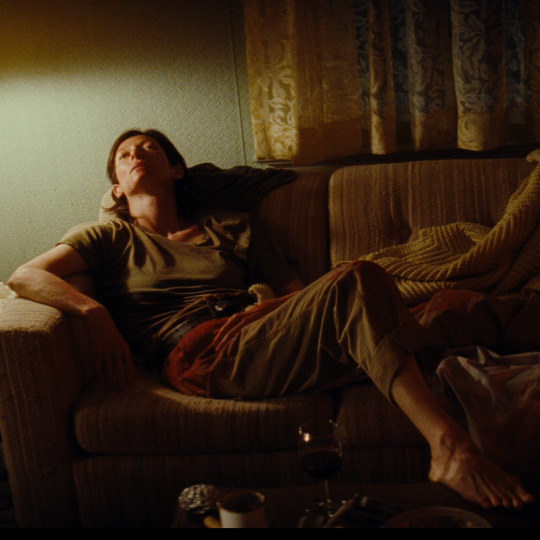
youtube
March
Anime: "Darling in the FranXX" by Atsushi Nishigori |03| Manga: "Bara no Tame ni" by Akemi Yoshimura |03| Cinema: "Cowboy from Copenhagen" by Nicolas Winding Refn |04| Cinema: "Breakfast on Pluto" by Neil Jordan |05| Cinema: "Holy Spider" by Ali Abadasi |06| Cinema: "Youth" by Paolo Sorrentino |07| Manga: "I'm the Villainess, So I'm Taming the Final Boss" by Anko Yuzu |09| Manga: "Goodbye, Eri" by Tatsuki Fujimoto |15| Book: The Entire Collection of Prose by Edgar Allan Poe |21| Cinema: "i am thinking of ending this" by Charlie Kaufman |23| Cinema: "We Need Talk About Kevin" by Lynne Ramsay |24| Manga: "Beware the Villainess!" by Yeolmae |28| Cinema: "Phantom Thread" by Paul Thomas Anderson |29| ------------------------------------ 1 Books; 4 Manga; 7 Cinema; 0 Anime
youtube

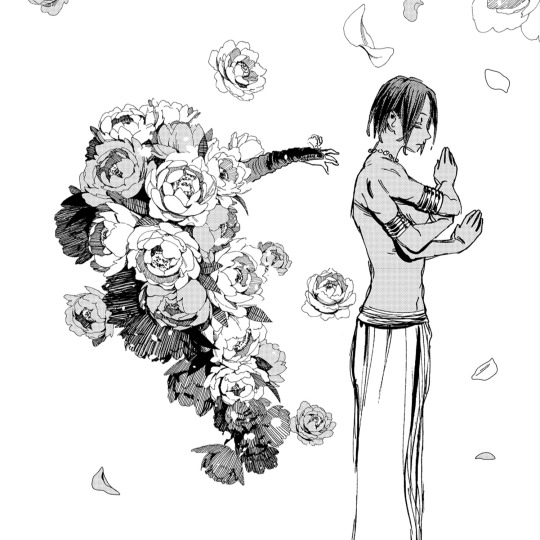
April
Anime: "Konosuba" by Natsume Akatsuki, Kurone Mishima, Yuujirou Abe, Takaomi Kanasak |01| Anime: “Only Yesterday” by Isao Takahata |02| Manga: "My Lesbian Experience With Loneliness" by Kabi Nagata |02| Manga: "Koroshiya 1" by Hideo Yamamoto |03| Manga: "1" by Hideo Yamamoto |03| Book: “Tradition of Literary Gothic” by Bella Nacpock |08| Book: “Metamodernism. Historisity, Affect and Depth” by Robin van den Akker |10| Anime: "GTO" by Tooru Fujisawa, Noriyuki Abe |14| Book: “The Archetypes and the Collective Unconscious” by Carl Jung |16| Manga: "Hell’s Paradise: Jigokuraku" by Yuuji Kaku |18| Cinema: “All the Beauty and the Bloodshed” by Laura Poitras |24| Cinema: “New Old Play” be Qiu Jiongjiong |25| Book: "Octet" by David Foster Walllace |25| Cinema: “Benedetta” by Paul Verhoeven |27| Manga: "Cells at Work! CODE BLACK" by by Shigemitsu Harada, Akane Shimizu, Issei Hatsuyoshi |28| Manga: "The Villainess Needs Her Tyrant" by Ta-Hong Il |30| ------------------------------------ 4 bOOKS; 6 mANGA; 3 Cinema; 3 Anime
youtube
May
Book: “Tell me a sto…” by Una Hurt |02| Manga: "The Villainess's Maker" by Jeongu, I-Su Seol |02| Book: “Lectures on aesthetics” by Georg Hegel |05| Book: “In the Shadow of the Silent Majorities” by Jean Baudrillard |06| Anime: "Cowboy Bibop" by Hajime Yatate, Shinichirou Watanabe, Shinichirou Watanabe, Akira Toba |14| Anime: "Cowboy Bebop: The Movie - Knockin' on Heaven's Door" by Hajime Yatate, Shinichirou Watanabe, Toshihiro Kawamoto, Kimitoshi Yamane |14| Cinema: "The Whale" by Darren Aronofsk |15| Cinema: "Lamb" by Vladimar Johannsson |16| mANGA: "Love Advice from the Great Duke of Hell" by Unfins |17| Cinema: "Bones and All" by Luca Guadagino |18| Cinema: "Alcarras" by Carla Simon |19| Cinema: "Everything, Everywhere All at Once" by Daniel Scheinert, Daniel Kwan |20| Manga: "The Villain's Savior" by Myeong Rang, Zetson, Seur-A Yeon |22| Cinema: "The Hateful Eight" by Quentin Tarantino |26| Book: “Chrysanthemum and Sward. Models of Japan culture” by Ruth Benedict |27| Book: "A Perfect Day for Bananafish" by J.D. Salinger |29| Book: "A Haunted Monastety" by Rober van Gulik |30| Manga: "When the Villainess is in Love" by HJ, Gwi-Jo Seo |31| ------------------------------------ 7 Books; 4 Manga; 6 Cinema; 2 Anime
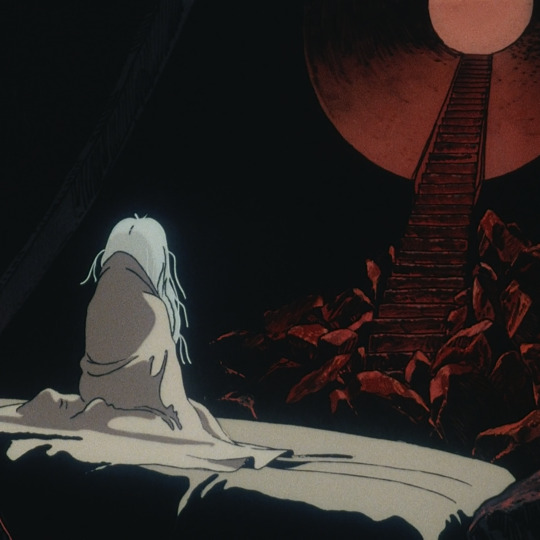


June
Manga: "Croa Chimera" by Kairi Sorano |02| Cinema: "Django Unchained" by Quentin Tarantino |02| Cinema: "Interstellar" by Cristopher Nolan |04| Cinema: "The Naked Gun 2½: The Smell of Fear" by David Zucker |07| Manga: "Coffin Jackson" by Chongtak |08| Manga: "Babelheim no Shounin" by Shouichi Furumi |08| Book: "Seven Night" by Jorge Luis Borges |09| Book: "Watch Cinema" by Jean-Marie Gustave Le Clézio |14| Cinema: "Call of the Night" by Kotoyama, Tomoyuki Itamura |18| Cinema: "Crows are White" by Ashen Nadeem |18| ------------------------------------ 2 Books; 3 Manga; 5 Cinema
Jule
Manga: "Scroll if You Dare" compilation webtoons |08| Manga: "Hell is Other People" by Yong-Ki Kim |08| Cinema: "Dreams" by Akira Kurosawa |09| Manga: "The Witch and Her Zombie Son" by Sinyura |09| Book: "Metaphysics" by Aristotle |24| ------------------------------------ 1 Book; 3 Manga; 1 Cinema
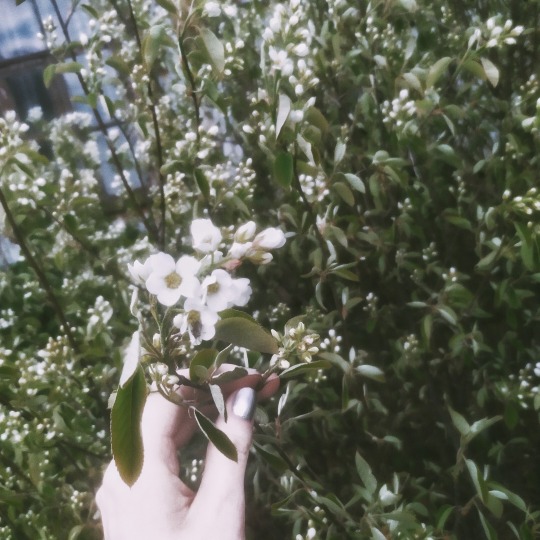

August
Cinema: "Master Gardener" by Paul Schrader |03| Manga: "Nude Model" by Tsubasa Yamaguchi |09| Book: "The Silence of the White City" by Eva García Sáenz de Urturi |10| Anime: "Akudama Drive" by Tomohisa Taguchi |12| Manga: "Miageru to Kimi wa" by Makoto Kobori |16| Anime: "Elfen Lied" by Mamoru Kanbe |17| Manga: "Shingeki no Kyojin" by Hajime Isayama |24| Manga: "Final Girl" by You Kokikuji |24| Manga: "Itoshi no Living Dead" by AidaIro |25| Manga: "Adolte and Adarte" by AidaIro |25| ------------------------------------ 1 Book; 6 Manga; 1 Cinema; 2 Anime
youtube
September
Manga: "Vanilla Jingai x Jingai Yuri Anthology" |04| Manga: "Cinnamon Jingai x Ningen Yuri Anthology" |04| Anime: "Neon Genesis Evangelion" by Hideaki Anno |07| Cinema: "Murder on the Orient Express" by Sidney Lumet |08| Cinema: "Men" by Alex Garland |09| Manga: "Neko no Otera no Chion-san" by Makoto Ojiro |10| Cinema: "Amélie" by Jean-Pierre Jeunet |10| Book: "Why I Am Not a Christian and Other Essays on Religion and Related Subjects" by Bertrand Russell |11| Cinema: "Crimes of the Future" by David Cronenberg |11| Cinema: "The Scent of Green Papaya" by Tran Anh Hung |16| Anime: "Inu-Oh" by Hideo Furukawa, Taiyou Matsumoto, Masaaki Yuasa, Fuuga Yamashiro |17| Anime: "The Duke of Death and His Maid S1" by Inoue, Yoshinobu Yamakawa |27| ------------------------------------ 1 Book; 4 Manga; 6 Cinema; 2 Anime
youtube
October
Cinema: "Death Proof" by Quentin Tarantino |05| Cinema: "Jackie Brown" by Quentin Tarantino |05| Cinema: "Once Upon a Time… in Hollywood" by Quentin Tarantino |07| Cinema: "American Psyho" by Marry Harron |08| Cinema: "Fight Club" by David Fincher |08| Cinema: "Leon" by Luc Besson |09| Cinema: "Lost in Translation" by Sofia Coppola |11| CinemaL: "Autumn Sonata" by Ingmar Bergman |12| Cinema: "Mona Lisa and the Blood Moon" by Ana Lily Amirpour |14| Cinema: "El Conde" by Pablo Lorrain |14| Cinema: "Asteroid City" by Wes Anderson |15| Cinema: "Mona Lisa" by Neil Jordan |20| Book: "The Master of Petersburg" by John Maxwell Coetzee |26| Anime: "Serial Experiments Lain" |31| ------------------------------------ 1 Book; 12 Cinema; 1 Anime
youtube
November
Book: "Not After Midnight" by Daphne du Maurier |11| Book: "My Lost City" by Francis Scott Key Fitzgerald |11| Cinema: "The Killer" by David Fincher |11| Manga: "Mariage busines" by KEN |16| Anime: "GOLDEN BOY" by Tatsuya Egawa |17| Book: "Men Without Women" by Ernest Hemingway |17| Manga: "Monster and the Beast" by Renji |19| Manga: "Shinonome Tantei Ibun Roku" by John Tarachine |19| Manga: "Bird Collector" by Kang Se Ah |20| Cinema: "Kurosawa’S Way" by Catherine Cadou |22| Book: "Modern Nihilism. Chronicle" by Costantino Esposito |26| Cinema: "Triangle of Sadness" by Ruben Östlund |27| Cinema: "Past Lives" by Celine Song |27| Cinema: "Rapito" by Marco Bellocchio |29| Anime: "Angel's Egg" by Mamoru Oshii, Yoshitaka Amano |29| Cinema: "A Haunting in Venice" by Kenneth Branagh |30| ------------------------------------ 4 Books; 4 Manga; 6 Cinema; 2 Anime
youtube
December
Book: "The Lake" by Banana Yoshimoto in English |05| Book: "Aesthetics. Textbook for universities" by Victor Bychkov |10| Cinema: "The Holdovers" by Alexander Payne |15| Cinema: "Chinatown" by Roman Polanski |15| Manga: "Pandora Hearts" by MOCHIZUKI Jun |19| Book: "This Is Water" by David Foster Wallace |20| Book: "May '68 Did Not Take Place" by Gilles Deleuze |22| Book: "Citrons from Sicily" by Luigi Pirandello |22| Book: "Six Characters in Search of an Author" by Luigi Pirandello |23| Cinema: "May December" by Todd Hayness |24| Manga: "The Wife I Loved Dearly" by Touryuumon Takeda |25| Manga: "Our Torsos Align: Human x Monster Love" by Ryou Sumiyoshi |25| Cinema: "The Taking of Pelham One Two Three" by Joseph Sargent |25| Manga: "Red Riding Hood's Wolf Apprentice" by Sayaka Mogi |26| Manga: "Tatsuki Fujimoto Before Chainsaw Man: 17-21" by Tatsuki Fujimoto |26| Manga: "Tatsuki Fujimoto Before Chainsaw Man: 22-26" by Tatsuki Fujimoto |27| Manga: "Just Listen to the Song" by Tatsuki Fujimoto |27| Manga: "Look Back" by Tatsuki Fujimoto |27| Manga: "Tetteleposan" by Tatsuki Fujimoto |27| Manga: "Imomushi" by Suehiro Maruo |27| Book: "Trilogy" by Jon Fosse |28| Manga: "The King and the Paladin" by Rin-Bi Lee |29| Cinema: "Seven Weeks" by Nobuhiko Obayashi |30| Manga: "Stargazing Dog" by Takashi Murakami |31| Manga: "Star Protector Dog" by Takashi Murakami |31| Manga: "Emergency Rations & Bountiful Feasts" by Nagabe |31| Cinema: "Between Revolutions" by Vlad Petry |31| ------------------------------------ 7 Books; 14 Manga; 6 Cinema
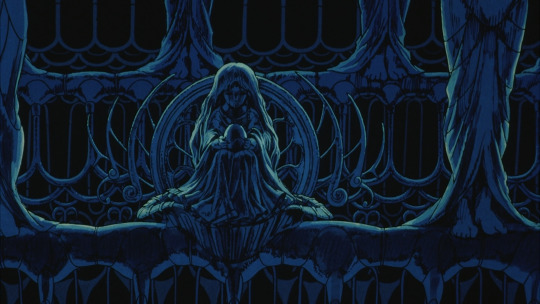
youtube
Top the Best Books of Year: 1. "The Lake" by Banana Yoshimoto in English 2. "Not After Midnight" by Daphne du Maurier 3. "The Master of Petersburg" by John Maxwell Coetzee Top the Best Manga of Year: 1. "Frau Faust" by Kore Yamazaki 2. "Bara no Tame ni" by Akemi Yoshimura 3. "The Witch and Her Zombie Son" by Sinyura Top the Best Cinema of Year: 1. “New Old Play” be Qiu Jiongjiong 2. "2001: A Space Odyssey" by Stanley Kubrick 3. "Between Revolutions" by Vlad Petry Top the Best Anime of Year: 1. "Cowboy Bibop" 2. "Serial Experiments Lain" 3. "Call of the Night"
2 notes
·
View notes
Text

Dear god tumblr doesn't like horizontal posts uuuuuuuuh click the image for better quality o~o"
For this assignment we had to use Carl Jung's 12 Character Archetypes and design a character based on one of the four quadrants: Freedom, Social, Order, and Ego
I decided to use some of my preexisting characters to see if I could assign an archetype to each one (and I wanted an excuse to finally draw a proper lineup of these four in color)
Jella: Everyman Vex: Ruler Ilene: Creator Odyssey: Rebel
I will say it was pretty difficult trying to give each one a pose to make their assigned archetype semi-clear as you could easily mistake Jella for the Jester or Vex as the Rebel based on clothing alone. On top of that, the last three characters could all easily fit under the Rebel archetype due to their personalities and the fact that they've committed some kind of crime or felony. Ultimately I went with the logic that everyone fits into a different archetype depending on the group they're in since real people aren't defined as one single category. For example, Odyssey here is the Rebel but on her own she could be the Explorer and she can also switch to being the Jester when she's being more casual and nonchalant.
#jester#jester girl#vampire#vampire girl#illusionist#chimera#monster#character design#character concept#character lineup#archetypes#character archetypes#12 archetypes#art class
4 notes
·
View notes
Text

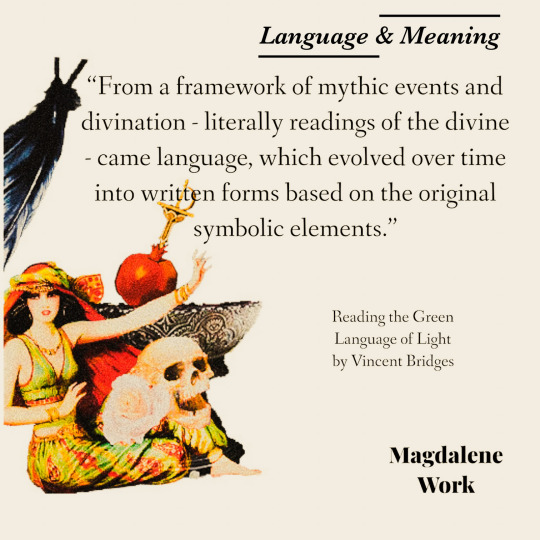
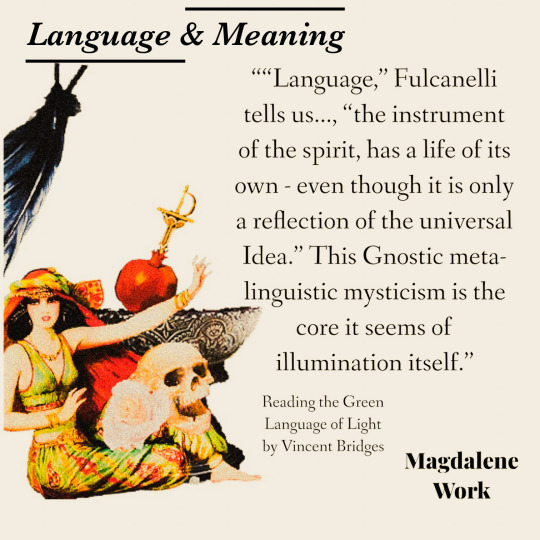
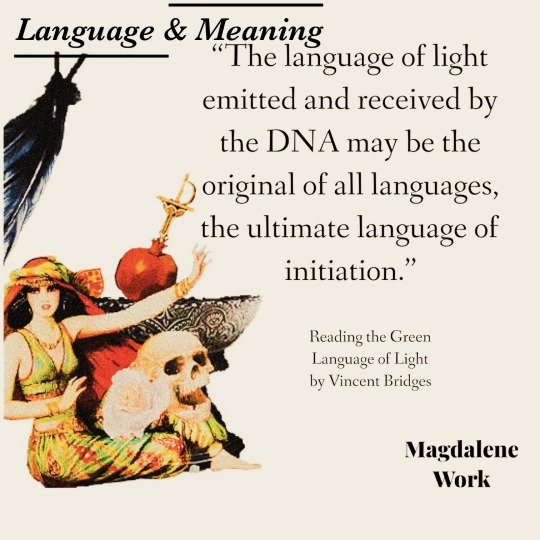
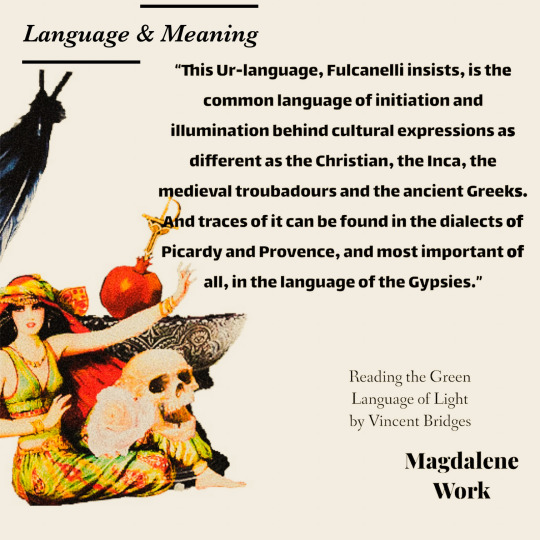
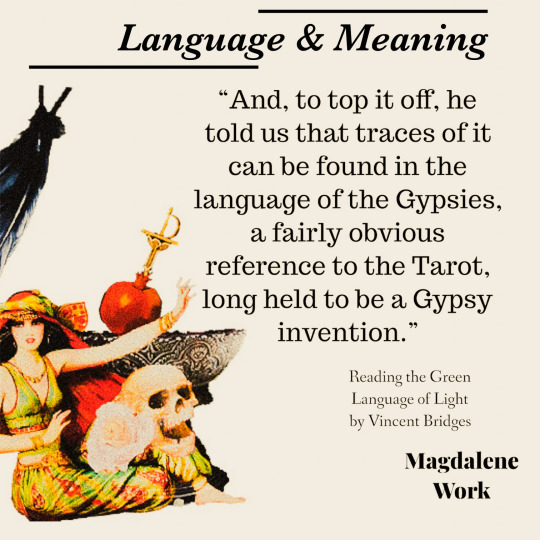
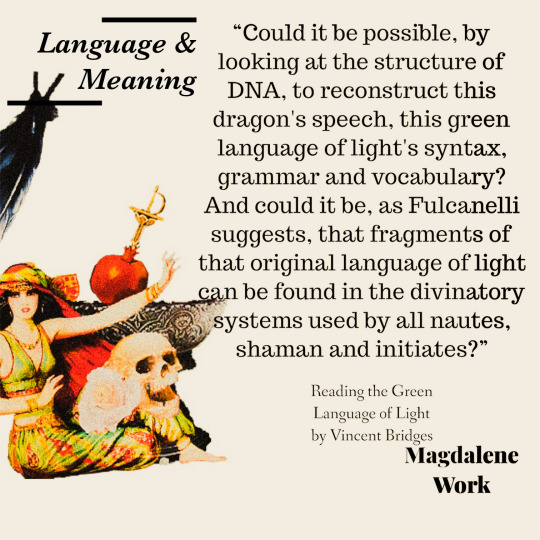
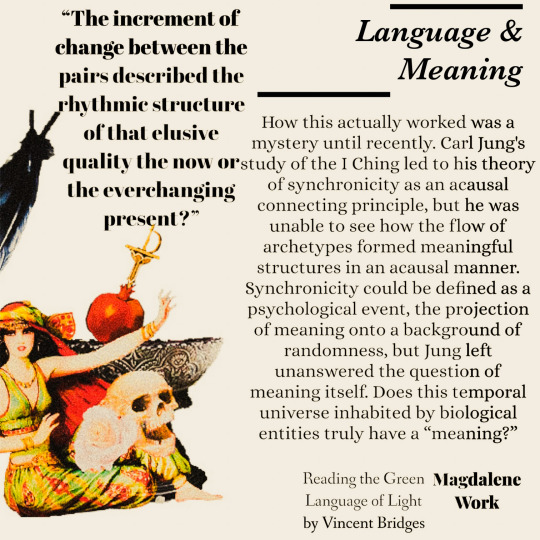
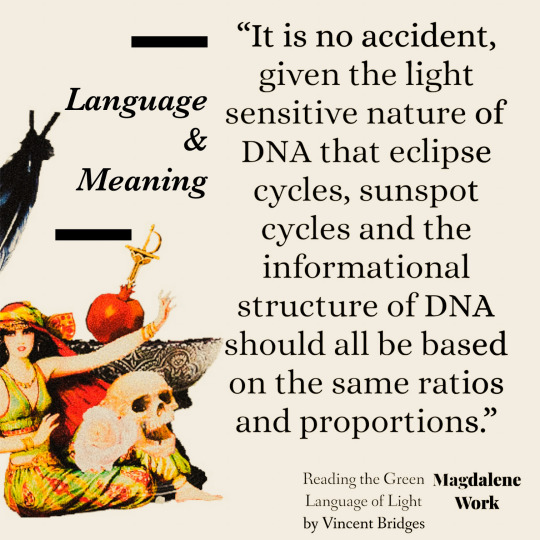
Quotes
* Divination is one of man's oldest spiritual technologies, its origins lost…
* From a framework of mythic events and divination - literally readings of the divine - came language, which evolved over time into written forms based on the original symbolic elements.
* “Language,” Fulcanelli tells us…, “the instrument of the spirit, has a life of its own - even though it is only a reflection of the universal Idea.” This Gnostic meta-linguistic mysticism is the core it seems of illumination itself.
* The language of light emitted and received by the DNA may be the original of all languages, the ultimate language of initiation.
* This Ur-language, Fulcanelli insists, is the common language of initiation and illumination behind cultural expressions as different as the Christian, the Inca, the medieval troubadours and the ancient Greeks. And traces of it can be found in the dialects of Picardy and Provence, and most important of all, in the language of the Gypsies.
* And, to top it off, he told us that traces of it can be found in the language of the Gypsies, a fairly obvious reference to the Tarot, long held to be a Gypsy invention.
* Could it be possible, by looking at the structure of DNA, to reconstruct this dragon's speech, this green language of light's syntax, grammar and vocabulary? And could it be, as Fulcanelli suggests, that fragments of that original language of light can be found in the divinatory systems used by all nautes, shaman and initiates?
* The increment of change between the pairs described the rhythmic structure of that elusive quality the now or the everchanging present.
* How this actually worked was a mystery until recently. Carl Jung's study of the I Ching led to his theory of synchronicity as an acausal connecting principle, but he was unable to see how the flow of archetypes formed meaningful structures in an acausal manner. Synchronicity could be defined as a psychological event, the projection of meaning onto a background of randomness, but Jung left unanswered the question of meaning itself. Does this temporal universe inhabited by biological entities truly have a “meaning?”
* It is no accident, given the light sensitive nature of DNA that eclipse cycles, sunspot cycles and the informational structure of DNA should all be based on the same ratios and proportions.
* From this we can see that the structure of the I Ching and the DNA code contains both local solar system time orchestrated by the permutations of sun, moon, eclipses and sunspot cycles, and the larger cycles of precessional time. Counting by turns and triplets reveals that a macrocosmic framework of precessional numbers supports the microcosm. The movement of the spring equinox backward through the zodiac due to the tilt of the earth's axis is measured at the rate of one degree every 72 years, therefore 12 triplets, 1 and 1/5th turns of the helix equals 1/6 of a degree of precessional motion, or 12 years. Given that there billions of turns and millions of triplets in a single strand of DNA, then the entire history of the universe, from beginning to end, could be coded into our DNA.
Reading the Green Language of Light
by Vincent Bridges
Divination is one of man's oldest spiritual technologies, its origins lost…
From a framework of mythic events and divination - literally readings of the divine - came language, which evolved over time into written forms based on the original symbolic elements.
“Language,” Fulcanelli tells us…, “the instrument of the spirit, has a life of its own - even though it is only a reflection of the universal Idea.” This Gnostic meta-linguistic mysticism is the core it seems of illumination itself.
The language of light emitted and received by the DNA may be the original of all languages, the ultimate language of initiation.
This Ur-language, Fulcanelli insists, is the common language of initiation and illumination behind cultural expressions as different as the Christian, the Inca, the medieval troubadours and the ancient Greeks. And traces of it can be found in the dialects of Picardy and Provence, and most important of all, in the language of the Gypsies.
And, to top it off, he told us that traces of it can be found in the language of the Gypsies, a fairly obvious reference to the Tarot, long held to be a Gypsy invention.
Could it be possible, by looking at the structure of DNA, to reconstruct this dragon's speech, this green language of light's syntax, grammar and vocabulary? And could it be, as Fulcanelli suggests, that fragments of that original language of light can be found in the divinatory systems used by all nautes, shaman and initiates?
The increment of change between the pairs described the rhythmic structure of that elusive quality the now or the everchanging present.
How this actually worked was a mystery until recently. Carl Jung's study of the I Ching led to his theory of synchronicity as an acausal connecting principle, but he was unable to see how the flow of archetypes formed meaningful structures in an acausal manner. Synchronicity could be defined as a psychological event, the projection of meaning onto a background of randomness, but Jung left unanswered the question of meaning itself. Does this temporal universe inhabited by biological entities truly have a “meaning?”
It is no accident, given the light sensitive nature of DNA that eclipse cycles, sunspot cycles and the informational structure of DNA should all be based on the same ratios and proportions.
#gnosis#alchemy#fulcanelli#carljung#language#greenlanguage#divination#vincentbridges#gypsum#gypsy#meaning#dna#light language
2 notes
·
View notes